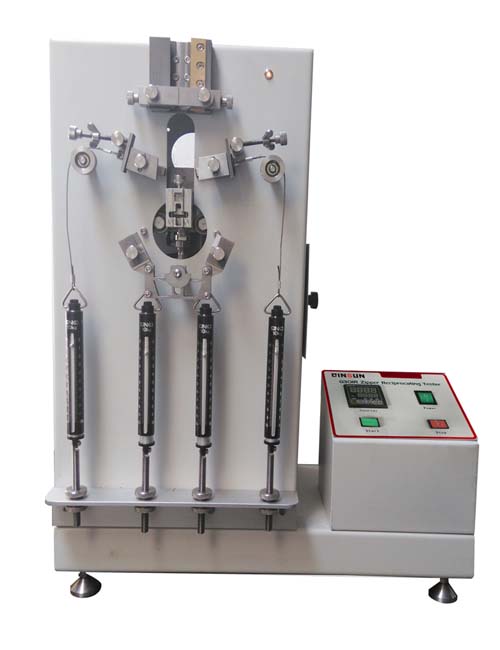
NewsInformation Center
Correct operation of Zipper Reciprocating Tester
2023/05/04
Zipper Reciprocating Tester is widely used in material mechanical property testing and research. Proper operation is critical to the accuracy and reliability of test results. The following is the proper operation of Zipper Reciprocating Tester:
1. Fully understand the structure and performance parameters of the tester
Before operating Zipper Reciprocating Tester, you need to fully understand the structure and performance parameters of the tester, including the maximum load, maximum displacement, test space, etc., to ensure that you can operate the tester correctly.


2. Select the appropriate test fixture and loading method
According to the situation of the test object, choose the appropriate test fixture and loading method. The test fixture needs to have good rigidity and the ability to transmit force, and the loading method should make the load state of the tested sample meet the actual situation.
3. Conduct initial calibration
Before the official test, the initial calibration is needed to ensure the accuracy and reliability of the tester. The calibration includes steps such as zero adjustment, range calibration and sensitivity calibration.
4. Perform sample installation
The sample to be tested is mounted in the test fixture and adjusted according to the test requirements to ensure that the specimen can receive maximum protection during the test and that the test results are accurate and reliable.
5. Set up test parameters and test conditions
According to the test requirements, set the test parameters and test conditions, including the maximum load, maximum displacement, loading rate, test environment, etc. The parameters need to be set reasonably to ensure accurate and reliable data during the test.
6. Start the zipper test
After all preparations are completed, press the button to start the test, and the tester starts to work. During the test, pay close attention to the state of the test instrument and the changes of the specimen, and deal with any abnormalities in time.
7. Perform data processing and analysis
After the test is completed, the data can be processed and analyzed by the data processing software of the test instrument to derive the test results. If necessary, data correction and post-processing are carried out to ensure that the results are credible and repeatable.
With the correct operation, the performance of Zipper Reciprocating Tester and the accuracy and reliability of the test results can be ensured, providing strong support for the study of the mechanical properties of materials.
Previous: What are the benefits of using a zipper test?
N e x t : How to get the most out of your zipper tester?



